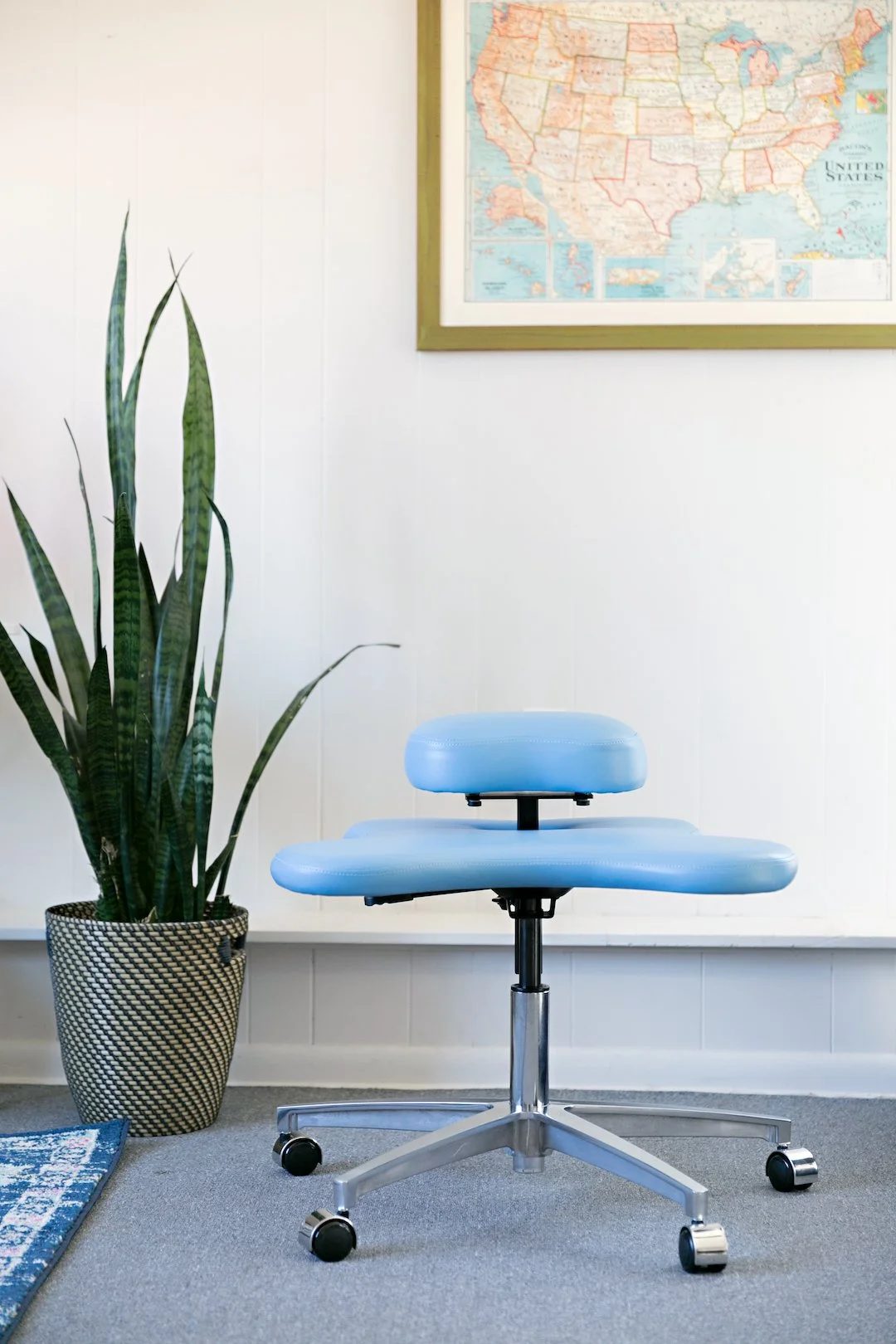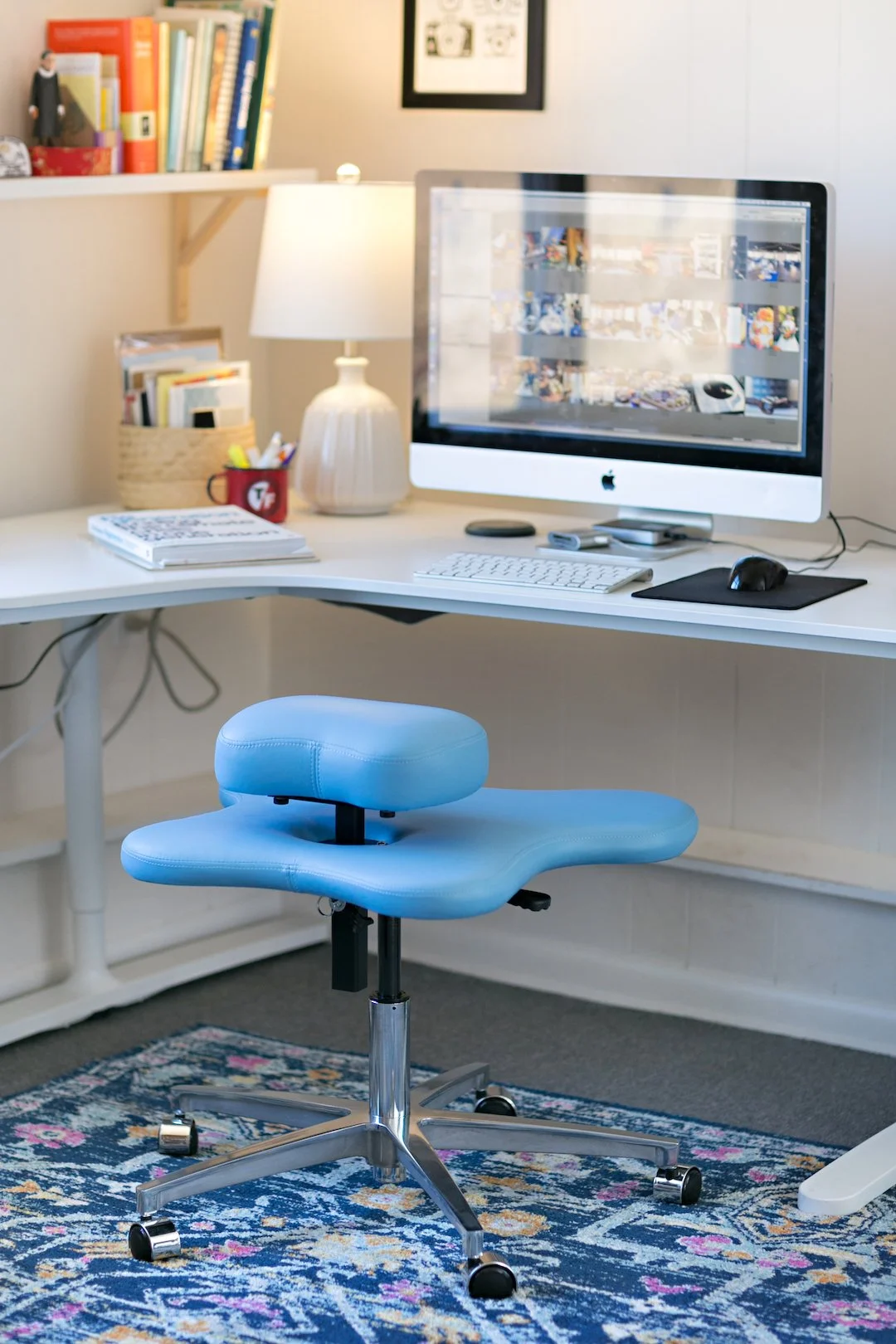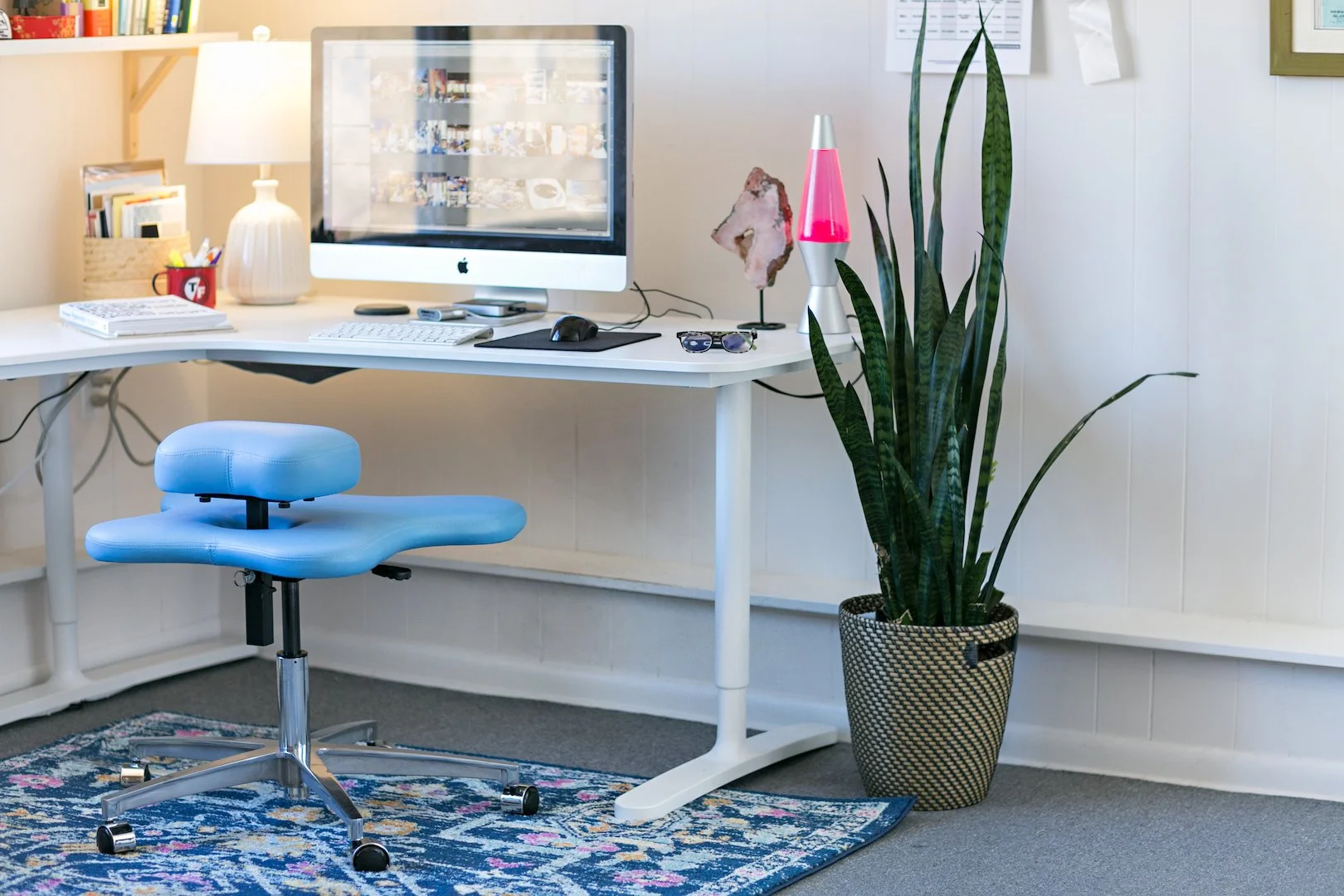Creative Sitters: Kim Wade, Photographer
This is the first interview in a new series featuring creatives who are also sitting creatively with a Soul Seat.
If you have been following Ikaria Design Co. on social media or visited our website over the past 3 to 4 years, you have seen the excellent photographic work of Kim Wade. The interview below took place in Kim’s home studio where she uses her Soul Seat.
Kim Wade, co-owner of photography studio, SilverBox Photographers brings a background in photojournalism to her unique approach to wedding photography, commercial photography for small businesses, and portraiture work. She also sustains herself through personal projects with social justice photography.
The following recorded conversation was edited for clarity.
Pack: How did you get exposed to the Soul Seat?
Kim: I feel like I’ve always known about you. When Silverbox was on Orr St., you were across the street in Orr Street Studios. I was sharing studio space with Hootdesign Co. By joining forces with Kristen Brown, another women-owned business, we could have a bigger space than we could alone. Kristen was using her Soul Seat and I thought it was really great. Frankly, I was envious of it. Then we moved our joint studios again, and you approached me at that point and asked if I could do some product shots of the Soul Seat. I was excited because in our first round of photographs we could try out the Soul Seat and barter some photo sessions. Since then I haven’t used any other desk chair. And that was three or four years ago.
P: I think the Soul Seat I’m sitting on here is the one we brought with us to your studio on that initial visit.
K: Yes, and I never let you take it back. I said, “no, this is mine now.”
P: The photos of yours that folks are seeing on our website and on Instagram, when you’re processing those, are you sitting on a Soul Seat?
K: Yeah, it’s kinda meta!
P: That is so meta, so cool. All artists have a unique process, how they do their work. Could you say a little about what your process is, what works best for you, and how the Soul Seat fits into it?
K: I think of my creative process in three stages. The first one is planning for a photoshoot. I love the term pre-visualization, and that can be with a specific image, as well as the entire shoot itself. The idea is that you are canvassing the image in your mind, seeing the look and feel of a specific image or how you want the whole photoshoot to go.
The second phase is the actual shooting phase where you're in the flow of creating the images. And I love the co-creation process. When I was twelve, my grandfather gave me that Minolta camera over there. He was a hobbyist photographer. So I first started doing flowers and nature, but over time I’ve really loved photographing people. So I love that co-creation process with other people. For example, when we did that shoot in The Historic Mule Barn. In that case, there were three types of co-creation, there’s what you and Hannah were envisioning, and what I am envisioning with that light and that space, and then the folks you brought in,
P: They’ve brought their own stories and visuals.
K: Yes, and their ideas. So I just love that dynamic. So that’s the second part. And then the third part of the creative process is often called post-production. Now we’ve got the images, we’re getting them out of the camera, and we’re processing them. So that’s where the Soul Seat comes in, at the processing phase. And I’ve been really reluctant to let anyone else do my post-processing.
P: Some photographers outsource their post-processing?
K: Yeah, there are some great people that you can work with and whole companies devoted to it. Since digital photography became the standard, you can now upload your files and someone in another country can process them and send them back to you. But I really like the start to finish process.
I had a professor in college, who said the creative process is a lot of BIC, Butt in Chair time. So the processing is a lot of BIC time, and I feel like it makes me a better photographer if I’m engaged with the images at that phase, because I’m more likely to realize, “Wow I could have used a better depth of field on that one”. So the Soul Seat enables me to put in the BIC time. The more I get to be immersed in my own work, the more likely I am to see changes I could make upstream in stages one and two the next time. It’s like you, the time you spend sitting in your own creation (the Soul Seat), lends you more insights into its strengths and are more likely to see what you can do to improve it. It’s true with my photography as well.
P: So when you’re doing all three stages, you’re more likely to take things back upstream for the next photoshoot, so you may need to do less in post-processing?
K: Yeah, or even try something creative, like, what if I tried taking it wide? I did so much tight stuff on this photoshoot, perhaps I should take it back, I’ve got some gaps here.
What the Soul Seat does, is it enables me to be more comfortable, and frankly in less pain while I’m doing the photo processing. Anyone who works at a computer, after a while you actually experience pain. As I’ve gotten older It’s not just discomfort, it is painful if you're not taking good care of your body and your posture. The Soul Seat enables me to basically do my job in a way that is more comfortable and also joyful, like literally when I come into my space, just look at how beautiful this is!
P: So the Soul Seat invites you into your BIC time?
K: Yes! I mean, I get my cup of coffee, and I sit here and I spend a little time. Because it is so adjustable, I can just decide at this moment what my body needs. I’ve been doing a lot of meditation and mindfulness work over the last several years. And one of the things I”m learning through that process is that the transitional moments, the interstitial moments in our lives are really special and meaningful in and of themselves if we don’t rush through them. The Soul Seat is part of a mindfulness moment for me.
Right now I’m working on an album for a bride, and she’s got a lot of tweaks to this album, and some of it is super mundane, like smoothing out wrinkles in her wedding dress. So, before I even dive into that task I’m just getting super comfortable adjusting and then I can dive in and then take regular breaks and reset and re-position. And that, in and of itself, I’m learning to just enjoy the process of positioning myself. Because it’s just like a yoga practice, that is the practice, the process is the practice.
P: We designed the Soul Seat so your body would get more feedback from gravity and from your own pelvis. Is that ever a distraction from your focus in your work, are you glad you get that information sooner than later? Has your process changed as a result of all this extra information from the chair?
K: I’m moving all the time, which is great, right? It enables me to move and stay on task and not get to the point of pain. Nobody should be in pain, we shouldn’t get to that point in the first place. So the biofeedback lets me be constantly moving and focused. It all feels very fluid and in constant motion in a really satisfying, comfortable, and satisfying way.
P: I see you’ve got your workspace set up here to be able to move off the chair and do some yoga.
K: Yes! And what is so awesome about the Soul Seat is that I’ve literally even used it for yoga practice! This house is a lot smaller than our former home, so every room needs to be multipurpose. I might come in here, [Kim gets down into tabletop pose and then reaches out her arms to rest on the Soul Seat, giving her shoulders a deep stretch] This is such a good opening for the shoulders. Because the biggest problem that I have with the photo editing is the knots up here in my shoulders and neck. So the hips and the shoulders are first to suffer, right? [Kim demonstrates a few more poses with assistance from her Soul Seat.]
P: Thanks so much for sharing your wisdom with us. Can folks get in touch with you through your website if they have a project they need your expertise on?
K: Certainly! My pleasure.



